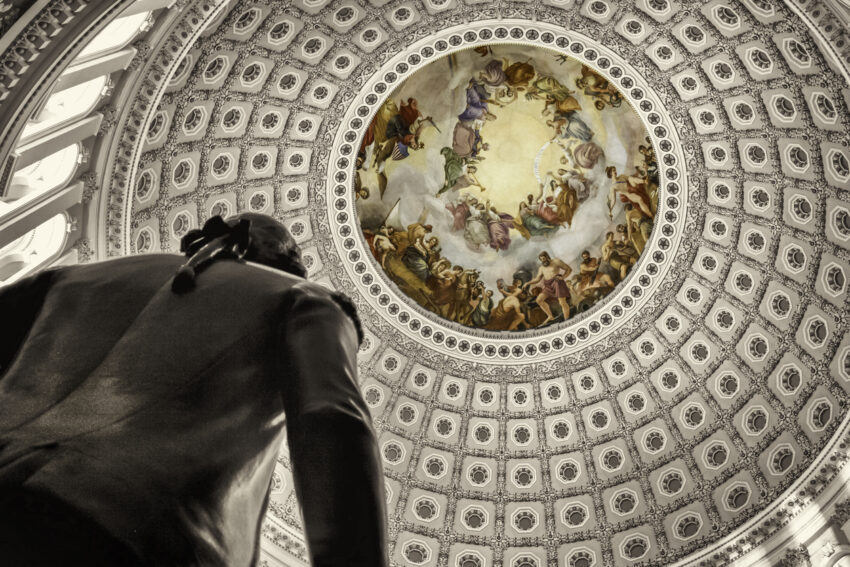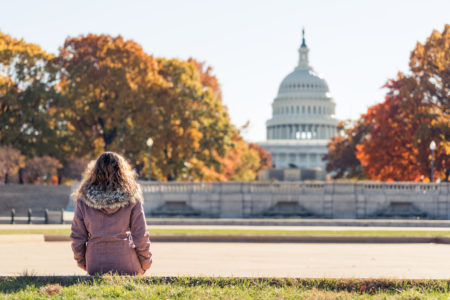
Share On Social!
Methane gas emissions have been on the rise over the past 15 years, according to recent numbers published by National Oceanic & Atmospheric Administration.
Methane can deprive the body of oxygen and cause fatigue, dizziness, convulsions, and even death.
What makes this especially bad news is that 1.81 million Latino Americans live within a half-mile of an oil and gas well, which raises their risk of methane exposure.
This is why 16 members of the Congressional Hispanic Caucus are calling on the Environmental Protection Agency (EPA) to tighten its rules on methane emissions.
“[U]nder the current proposal, operators that calculate lower potential emissions (less than 3 tons per year of methane) could still escape regular leak monitoring. This is problematic because these smaller, leak prone wells can release more methane or natural gas into the air than they produce,” the letter states. “Also, large leaks can occur at smaller well sites. EPA must address this issue by enacting comprehensive requirements for frequent leak inspections, without exceptions for smaller wells.”
The Request on Methane Reform and Its Implications
Methane is a contributor to the climate crisis, the legislators’ letter states.
In fact, methane has about 80 times the warming potential of carbon dioxide over the first 20 years after its release.
The group is hoping to change two key facets of the emissions rules:
- Smaller leak prone wells should be covered with regular inspections under the rule; and
- The wasteful practice of flaring should be addressed more vigorously before the rule is finalized by eliminating routine flaring, as leading states have done.

“Just as importantly, establishing a strong rule for methane will also reduce health-harming co-pollutants, including Volatile Organic Compounds (VOCs) that contribute to ozone, as well as toxic and hazardous chemicals like benzene,” Rep. Nanette Diaz Barragán writes. “The reduction of these co-pollutants will be key to reducing localized air pollution, and the associated negative health impacts that often disproportionately impact communities of color who live near oil and gas development and production sites.”
While this request has not made traction yet, officials at the EPA are saying tighter rules on methane emissions could come at a later time.
“We’re using the myriad requests for specific comment in this proposal to try to get at … some of these issues, whether it’s coverage of sources and practices like flaring or the continual campaign that we and others have to improve the data, to continually bring it closer and closer into alignment as a reliable indicator of reality,” said EPA Principal Deputy Assistant Administrator Joe Goffman said at the COP26 climate summit in Glasg last November.
Climate Change and Latinos
The larger issue at play here is climate change.
Global warming is making life harder for Latinos and other communities of color.
Given current and historical emissions levels, Americans, specifically, are looking down the barrel of a hot, uncomfortable future.
Respiratory illness rates reflect this inequity, which include:
- Black and Latino children in the U.S. are diagnosed with asthma at higher rates than white children.
- Latino children are almost twice as likely to die from asthma as white children.
- For Black children the death rate from asthma is almost eight times higher than for white children.
A groundbreaking 2019 study estimated that “Black and Latino populations experience 56% and 63% more pollution respectively than their activities cause.”
Cities across the U.S. will experience harsher extreme-weather events, see increases in daily temperatures, and some might no longer be inhabitable.
Worse, this crisis will have significantly worse repercussions on underserved groups, including Latinos. These populations will have a more challenging time dealing with future consequences, but they are already enduring its current impacts. 
Experts and researchers say recent extreme weather events—such as the massive snowstorm that caused rolling blackouts throughout Texas in 2021—is only one part of the broader climate crisis problem.
Climate change could lead to nearly 300 cities becoming uninhabitable.
Some of America’s most significant cities face the highest risks, as most are near a coast. These urban hubs contain large populations, capital assets, and ports that influence the national economy.
What You Can Do to Address Chemical Exposure
As we await the outcome of the letter on methane from 16 Latino legislators, you can take action.
You can share crucial environmental information with your local leaders, too.
If you’d like to continue making a difference in your community’s sustainability practices, download a Salud America! Health Equity Report Card.
The report card will show you how you will see how your county is doing on various health-related conditions compared to the rest of your state and nation. The data will show how your area stacks up in air toxin exposure, respiratory hazard indices, population density, tree canopy, and job rates in the agricultural, construction, and manufacturing fields.
Email your Health Equity Report Card to community leaders. Share it on social media. Use it to make the case to for health equity where it is needed most!
Explore More:
Air QualityBy The Numbers
24
percent
of Mexican American-nonsmokers are exposed to secondhand smoke



